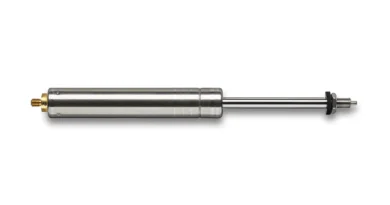Everything You Need to Know About Bearing Pullers
Bearing pullers are tools to eliminate bearing sets from a rotating machine or a blind bearing hole. These tools are widely used for removing a caged set of tapered or ball bearings from a rotating shaft like in a car’s transmission. They must be harder than the parts used; therefore, they are made from tool-grade steel. Moreover, these manual tools are operated by hand with the help of the handle on the turn screw or through a male hex end to match a drive socket. Some bearing pullers can also be hydraulically powered by a hydraulically powered piston pressed against the end of the shaft when the bearing is on.
You can also find small bearing pulling to remove small millimetre-wide bearings, small fishing reels, and fractional horsepower motors. Arms come with extensions that allow the operator to pull in the inner race. It is suggested to drive from the inner race as it is tightly set on the shaft. The outer race is not firmly attached to the rest of the bearing assembly.
Things to Consider when Choosing Bearing Pullers
- Number of jaws
- Hydraulic Vs. Mechanical
- The distance between the jaw’s pulling area and the puller’s jaw heads.
- Synchronous and self-centered jaws.
- Locking Mechanism
- Tonnage
- Spread.
Types of Bearing Pullers
There are multiple types of bearing pullers to choose from. If you carefully select them according to your application, you can get the job done safely without causing any damage.
Mechanical and Hydraulic Pullers
Mechanical bearing pullers can be operated by rotating a crossbar that moves the centre screw in the direction of the shaft. These bearing pullers consist of an integral hydraulic cylinder powered by a pump to apply the required amount of force. The plunger enables the direct and non-twisting application of thrust, which is more secure and effective. You will find many options if you search for tools specifically to remove the bearing.
Two and Three Arm Bearing Pullers
These are the most commonly used bearing pullers to remove bearings or gears. The arms consist of fingers at their end that can bend and get in behind the bearing to its race. Torque is applied to the centre screw of the puller so that it is pushed on top of the shaft, and an upward thrust is applied to the bearing’s race. Fingers and arms are usually interchangeable; the same pullers can accommodate various bearing and shaft lengths and sizes.
Internal Bearing Puller
Internal bearing pullers are constructed to extract a bushing, a bearing set, or a simple bronze sleeve present in a blind hole. Blind holes can preclude the help of a punch to drive out the bearing or sleeve. Because internal bearing pullers have a side hammer near the shaft to provide upward thrust and shock to the bearing, they resemble small dent pullers. The collet is expandable, which goes into the bearing at the head of the puller shaft. The operator can lock the collet inside the bushing or bearing, commonly rotating the collet firmer on the puller shaft. By moving the slide hammer away from the bearing and up towards the operator, the bearing’s hammer will move upward, thrusting to the bushing and removing it from its hole.




